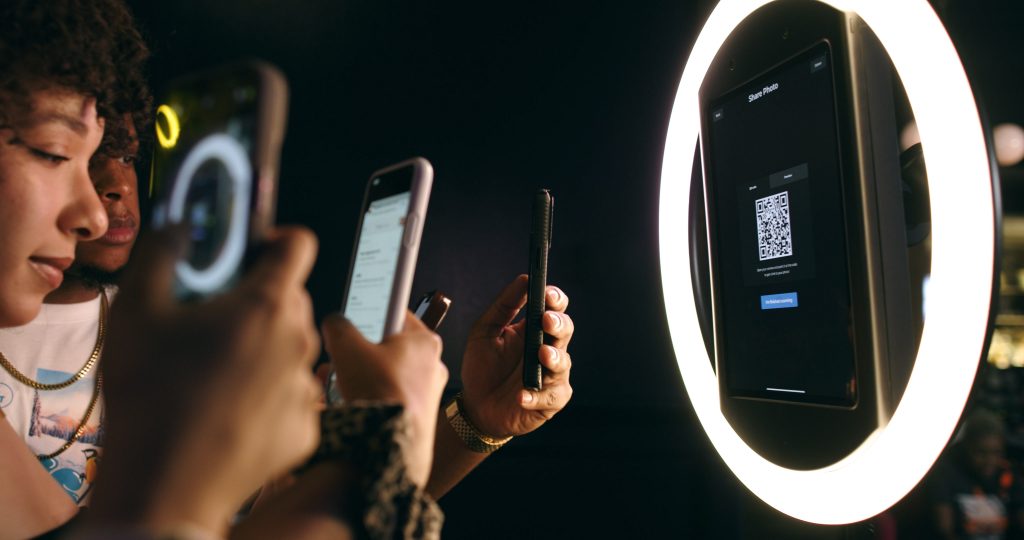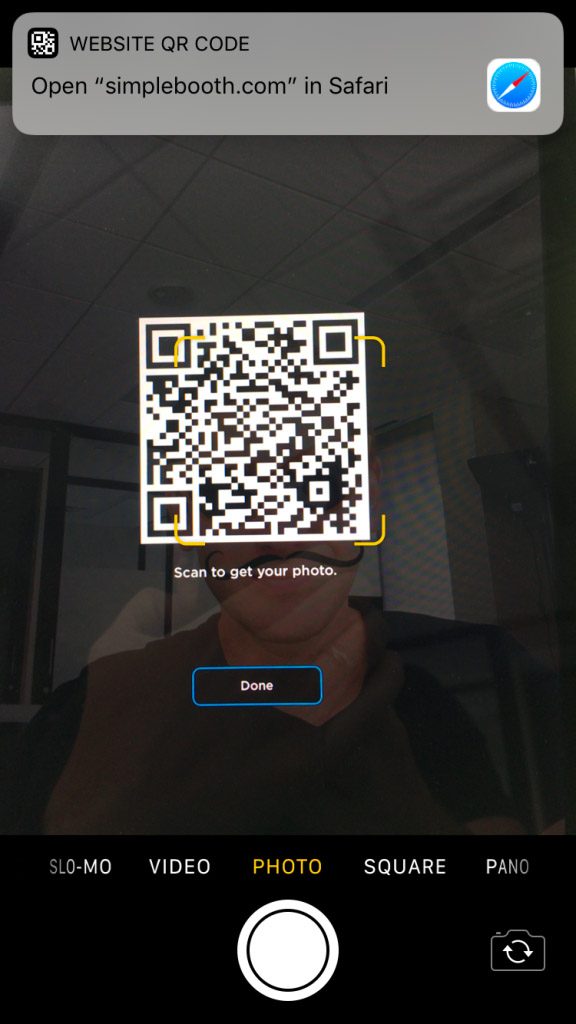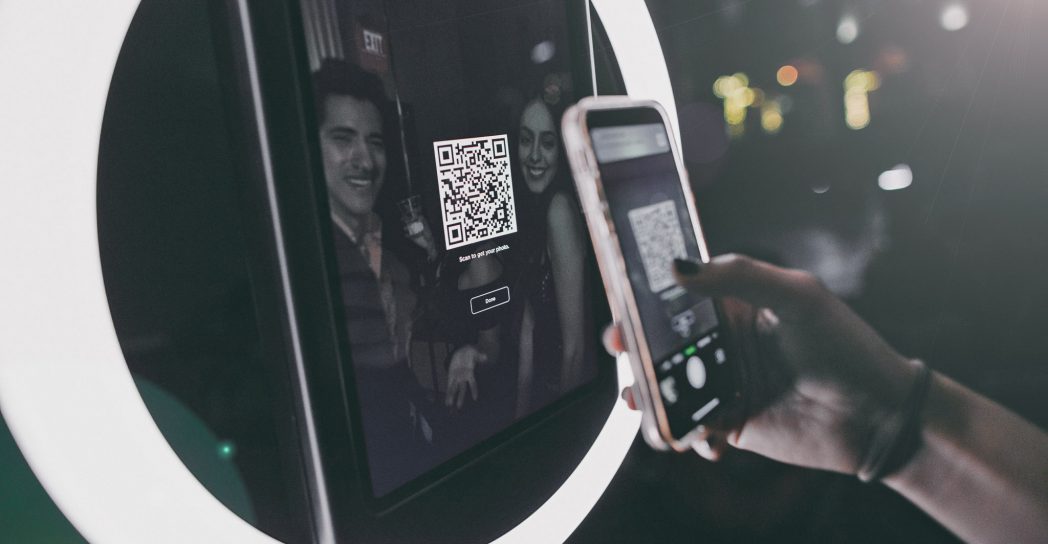QR codes took their time to catch on in the US, but adoption is officially widespread. It’s easy to stumble upon everyday examples of QR codes in action, like restaurants offering menus through QR codes, product packaging with QR codes to read manuals or leave reviews, and signage at events directing guests to download apps by QR code.
As a result, most people now intuitively understand that they can simply open the camera app on their smart phone, point it at the code, and get what they need.
This is great news, because QR codes are an extremely convenient way to connect in-person events with digital experiences.
At Simple Booth, we’ve launched a practical new way to use QR codes with your photo booth: a fast and contactless way for participants to receive their pictures!

How QR code sharing works in Simple booth apps
Now, a participant can get their image or video simply by opening their phone’s camera app and pointing it at the unique QR code displayed in the Simple Booth HALO® app. This is the fastest way to view a new image in the online photo booth gallery, especially for a group of users who don’t all want to take turns entering their phone numbers.

As you scan the QR code, your camera app prompts you to open the link in your mobile browser. Then you can view your photo, share or download it, and explore other branded photos in the gallery.
The Simple Booth QR sharing feature is different from solutions that work in reverse, where the kiosk will scan a QR code that the participant holds up. Those QR code sharing setups work by looking up the contact information associated with the attendee’s QR code through an API integration. We have implemented this for a Super Bowl activation in the past. If you need this, please contact us to discuss a custom solution.
Privacy considerations
Unlike text message or email delivery, scanning a QR code is a method for participants to get their digital image without providing any contact information. This is great for any organization seeking to minimize the collection of personally identifiable information (PII) for compliance or privacy reasons.
This isn’t necessarily helpful if your organization’s goal is actually to capture contact information, but it doesn’t hurt it either. Because Simple Booth’s data capture feature works through a dedicated form that users can always opt-out of, you can get the best of both worlds by keeping QR as a send option after the form is submitted or skipped.
Sharing options by network speed
QR code delivery works best on a reliable internet connection, where the photo can be uploaded and become available at the link before participants scan the code. If your kiosk doesn’t have a reliable internet connection, the Simple Booth app will manage expectations with participants by letting them know to expect the photo to be ready soon.
However, text message or email can be a better option on slow or unreliable connections because these can be queued and sent later, thereby notifying the participant when the photo is ready.
Use cases for QR codes
QR codes are a convenient way to share photos for any event or campaign, but there are certain scenarios where they offer a huge advantage over other delivery methods.
For example, if your photo kiosk is in an airport or area where many international visitors will be passing through. QR codes were popular internationally before they took hold in the US, and bypass issues like unfamiliar keyboards and characters for entering emails, country code entry for phone numbers, or whether or not SMS is supported for that country.
Another example where QR codes shine is events for celebrities, government officials, or other highly private individuals. These people may prefer not to enter their personal contact details.
There you have it! QR codes are available in all Simple Booth plans as a touch-free photo delivery method.
Simple Booth is a platform for social photography that businesses use to engage customers, get new leads and create social impressions online.
